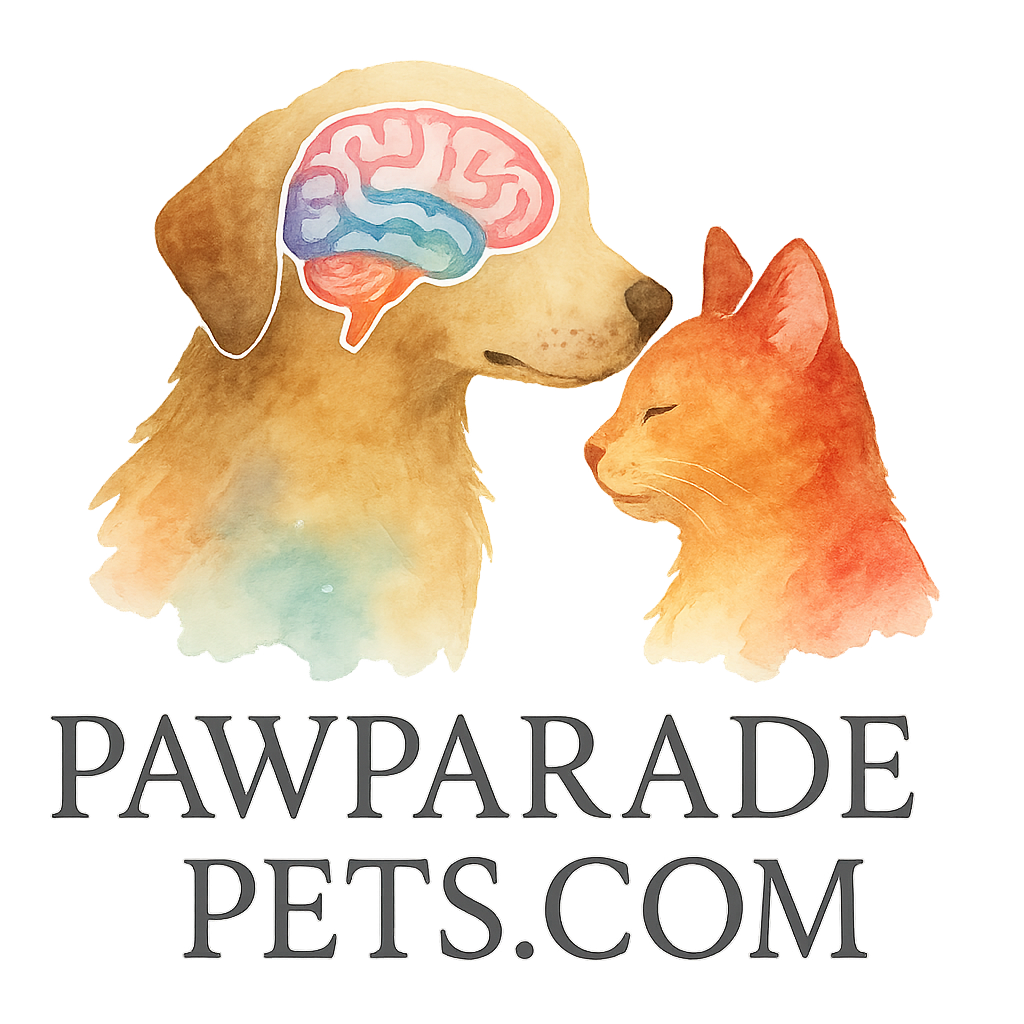Introduction: Why Brain Training Matters for Pets
Have you ever noticed your pet getting bored, restless, or even destructive? That’s often a sign they’re craving mental stimulation. Brain training for pets isn’t just about fun games—it’s about building focus, improving obedience, and nurturing problem-solving skills. A mentally stimulated pet is calmer, happier, and healthier.
Understanding the Concept of Brain Training
What Is Brain Training for Pets?
Brain training is like a mental workout for your furry friend. Instead of relying only on physical exercise, brain games challenge pets to think, solve problems, and stay engaged. Just like humans benefit from puzzles and memory games, pets thrive when they use their intelligence daily.
Benefits of Brain Training for Focus and Behavior
The benefits go way beyond simple entertainment. Brain training helps:
- Improve obedience and responsiveness.
- Reduce boredom-related behaviors like chewing or barking.
- Strengthen the bond between you and your pet.
- Build patience, focus, and discipline.
If you’re ready to dive deeper into structured learning, check out the Brain Training Basics.
Exercise 1: The Name Game
How It Improves Focus
This simple yet powerful exercise helps your pet learn to recognize their name and pay attention instantly when called. It sharpens focus while reinforcing obedience.
Step-by-Step Guide
- Sit with your pet in a quiet space.
- Call their name in a cheerful tone.
- When they look at you, reward them with a treat or praise.
- Repeat, gradually increasing distractions.
Over time, this builds sharp focus and faster recall responses.
Exercise 2: Treat Puzzle Toys
Mental Stimulation Through Play
Puzzle toys are like Sudoku for pets—they force them to think before getting a reward. These toys build patience and problem-solving skills.
Recommended Puzzle Options
- Beginner: Simple treat-dispensing balls.
- Intermediate: Puzzle boards with hidden compartments.
- Advanced: Interactive electronic feeders.
Explore a variety of tools and toys for brain training to keep things interesting.
Exercise 3: Hide and Seek
Engaging Natural Instincts
Hide and seek taps into your pet’s natural curiosity and hunting instincts. Not only is it fun, but it also teaches focus and persistence.
Making It Challenging Over Time
Start by hiding in easy-to-find spots. As your pet improves, increase the difficulty—hide behind doors, under blankets, or in another room.
Exercise 4: The Cup Game
Sharpening Memory and Attention
This classic brain teaser trains pets to follow visual cues and remember object placement.
Variations to Try
- Start with two cups and a treat under one.
- Gradually increase to three or more cups.
- Shuffle them slowly at first, then faster as your pet improves.

Exercise 5: Obedience Commands with a Twist
Building Discipline and Patience
Standard commands like sit or stay are more powerful when combined with brain challenges. For example, asking your pet to “stay” while you move around adds a layer of difficulty.
Using Rewards Effectively
Use treats, toys, or verbal praise to reinforce positive behavior. Explore more strategies with behavior and obedience training.
Exercise 6: Obstacle Course Adventures
Combining Physical and Mental Training
Obstacle courses are the ultimate mix of exercise and focus. Your pet learns to follow directions while navigating tunnels, jumps, and cones.
Indoor vs. Outdoor Setups
- Indoor: Use chairs, cushions, and broomsticks.
- Outdoor: Set up agility tunnels, jumps, and weaving poles.
Exercise 7: Scent Work Games
Why Smell-Based Games Boost Focus
Dogs, especially, rely heavily on scent. Engaging their sense of smell keeps them calm, focused, and mentally satisfied.
Simple DIY Nose Work Exercises
- Hide treats in different parts of the house.
- Use scent-marked toys and let your pet track them.
- Try advanced scent kits for structured challenges.
Find more creative games and activities for nose work training.
Exercise 8: Interactive Gadgets and Devices
Tech-Based Brain Training for Pets
Pet tech is booming. From smart feeders to interactive laser toys, gadgets add variety to training while giving pets a mental boost.
Choosing the Right Tools
Look for gadgets that:
- Offer adjustable difficulty.
- Encourage independent play.
- Provide safe interaction.
Explore gadgets and devices to find the perfect fit.
Exercise 9: Advanced Problem-Solving Challenges
Keeping Your Pet Engaged Over Time
Once your pet masters basic exercises, it’s time to raise the bar. Complex puzzles and multi-step commands keep them sharp.
When to Level Up the Difficulty
If your pet breezes through an exercise in under 2 minutes, it’s time for something more advanced. Explore advanced cognitive challenges for inspiration.
Tips for Successful Brain Training
Consistency Is Key
Just like hitting the gym, results come from regular practice. Short, daily sessions are more effective than occasional long ones.
Balancing Fun and Discipline
Always keep training positive. Mix treats, play, and praise with discipline to ensure your pet stays motivated.
Common Mistakes to Avoid
Overtraining and Frustration
Pushing too hard can frustrate your pet. End each session on a win to keep motivation high.
Ignoring Your Pet’s Learning Style
Some pets love food rewards, while others respond better to toys or affection. Tailor training to their preferences.
How Often Should You Do Brain Training?
Finding the Right Balance for Your Pet
Most experts recommend 10–15 minutes of brain training daily. Adjust based on your pet’s age, breed, and energy level.
Additional Resources for Brain Training
Tools, Toys, and Games
Discover an extensive list of brain-boosting toys, gadgets, and activities.
Further Learning Links
Conclusion
Brain training for pets is more than just playtime—it’s an investment in their mental health, focus, and overall happiness. From simple games like the Name Game to advanced challenges, these exercises strengthen the bond between you and your pet while keeping their minds sharp. Remember, consistency, patience, and fun are the keys to success.
FAQs
1. What age can I start brain training for my pet?
You can start as early as puppy or kitten age—just keep it simple and fun.
2. Can senior pets benefit from brain training?
Absolutely! Brain training keeps older pets mentally sharp and engaged.
3. How long should each training session be?
Aim for 10–15 minutes per day to avoid overwhelming your pet.
4. Do I need expensive toys for brain training?
Not at all. Many exercises use everyday items like cups, blankets, or chairs.
5. Is brain training only for dogs?
No! Cats, birds, and even rabbits can benefit from brain games.
6. How do I know if my pet enjoys brain training?
Look for tail wags, alertness, or eagerness to participate. If they’re disengaged, switch up the activity.
7. What if my pet struggles with a game?
Break the task into smaller steps, celebrate small wins, and gradually build difficulty.


